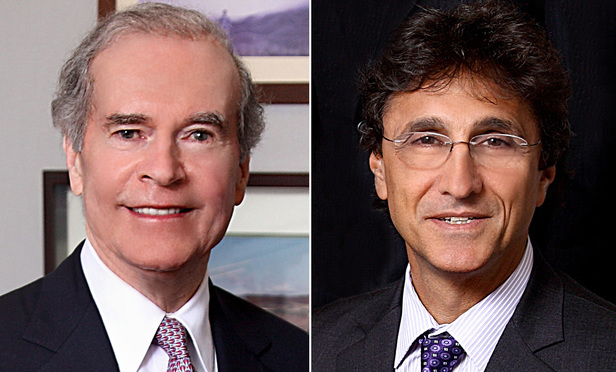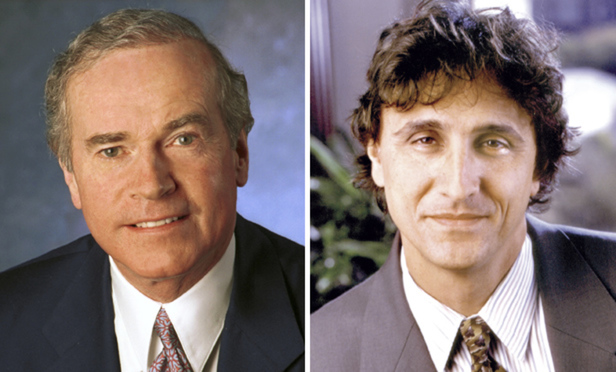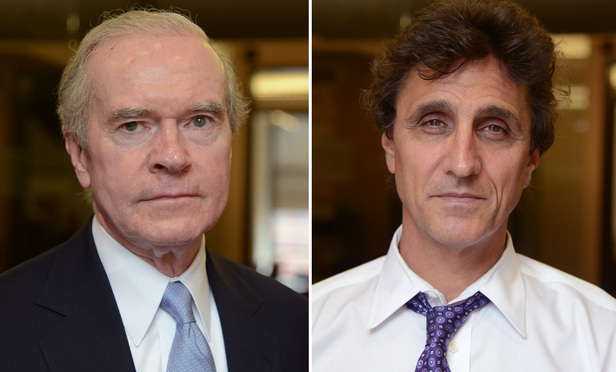Matthew Gaier

April 05, 2016 | New York Law Journal
New York State Medical Indemnity Fund ExperienceIn their Medical Malpractice column, Thomas A. Moore and Matthew Gaier examine the impact of the New York State Medical Indemnity Fund, established five years ago, and make suggestions for improving its effectiveness and its ability to serve the injured children for whom it was established.
By Thomas A. Moore and Matthew Gaier
38 minute read

February 02, 2016 | New York Law Journal
Recent Court of Appeals Decision on Duty to Non-PatientsIn their Medical Malpractice column, Thomas A. Moore and Matthew Gaier write that in a 1988 decision holding medical professionals not liable for a car accident involving a patient, the Court of Appeals expressly left open the possibility that it might recognize a duty of care in a circumstance where the health-care provider administered or prescribed medication that affirmatively created an impaired driving condition and failed to warn the patient.
By Thomas A. Moore and Matthew Gaier
13 minute read

December 01, 2015 | New York Law Journal
Further Clarification of Summary Judgment StandardIn their Medical Malpractice column, Thomas A. Moore and Matthew Gaier, discuss the "judicial drift" that led to a rule that a moving defendant could establish entitlement to summary judgment by submitting evidence only that there was no departure from accepted practice, ignoring causation, and that in order to defeat the motion, the plaintiff would have to prove both departures and causation—a rule that has not yet been universally overturned.
By Thomas A. Moore and Matthew Gaier
13 minute read

November 30, 2015 | New York Law Journal
Further Clarification of Summary Judgment StandardIn their Medical Malpractice column, Thomas A. Moore and Matthew Gaier, discuss the "judicial drift" that led to a rule that a moving defendant could establish entitlement to summary judgment by submitting evidence only that there was no departure from accepted practice, ignoring causation, and that in order to defeat the motion, the plaintiff would have to prove both departures and causation—a rule that has not yet been universally overturned.
By Thomas A. Moore and Matthew Gaier
13 minute read

October 06, 2015 | New York Law Journal
Physician Liability From Collaborative ArrangementsIn their Medical Malpractice column, Thomas A. Moore and Matthew Gaier write: As the practice of medicine and the provision of health care continue to evolve, it has become increasingly common that diagnosis, care and treatment are provided by other health-care professionals, such as nurse practitioners and midwives, who are required to collaborate with physicians. But that collaboration can lead to liability for physicians who fail to provide proper supervision or oversight.
By Thomas A. Moore and Matthew Gaier
14 minute read

October 05, 2015 | New York Law Journal
Physician Liability From Collaborative ArrangementsIn their Medical Malpractice column, Thomas A. Moore and Matthew Gaier write: As the practice of medicine and the provision of health care continue to evolve, it has become increasingly common that diagnosis, care and treatment are provided by other health-care professionals, such as nurse practitioners and midwives, who are required to collaborate with physicians. But that collaboration can lead to liability for physicians who fail to provide proper supervision or oversight.
By Thomas A. Moore and Matthew Gaier
14 minute read

August 04, 2015 | New York Law Journal
Recent Decision on Foreign ObjectsIn their Medical Malpractice column, Thomas A. Moore and Matthew Gaier write that although New York does apply a limited discovery rule when a foreign object is left in a patient's body, it has been construed so narrowly as to render it inapplicable to a broad variety of objects left in patients during surgical and other invasive procedures. However, in a recent decision the Court of Appeals has signaled that the restrictions imposed on this ameliorative rule have their limits.
By Thomas A. Moore and Matthew Gaier
13 minute read

August 03, 2015 | New York Law Journal
Recent Decision on Foreign ObjectsIn their Medical Malpractice column, Thomas A. Moore and Matthew Gaier write that although New York does apply a limited discovery rule when a foreign object is left in a patient's body, it has been construed so narrowly as to render it inapplicable to a broad variety of objects left in patients during surgical and other invasive procedures. However, in a recent decision the Court of Appeals has signaled that the restrictions imposed on this ameliorative rule have their limits.
By Thomas A. Moore and Matthew Gaier
13 minute read

June 02, 2015 | New York Law Journal
Additional Recent Decisions on Continuous TreatmentIn their Medical Malpractice column, Thomas A. Moore and Matthew Gaier write that where applicable, the continuous treatment doctrine permits medical malpractice actions to be brought beyond the statutory two-and-a-half year period after the malpractice. Recent decisions demonstrate that whether the ongoing treatment is related to the original condition remains a significant factor in determining the applicability of the doctrine.
By Thomas A. Moore and Matthew Gaier
13 minute read

June 01, 2015 | New York Law Journal
Additional Recent Decisions on Continuous TreatmentIn their Medical Malpractice column, Thomas A. Moore and Matthew Gaier write that where applicable, the continuous treatment doctrine permits medical malpractice actions to be brought beyond the statutory two-and-a-half year period after the malpractice. Recent decisions demonstrate that whether the ongoing treatment is related to the original condition remains a significant factor in determining the applicability of the doctrine.
By Thomas A. Moore and Matthew Gaier
13 minute read
Trending Stories
- 1Gibson Dunn Sued By Crypto Client After Lateral Hire Causes Conflict of Interest
- 2Trump's Solicitor General Expected to 'Flip' Prelogar's Positions at Supreme Court
- 3Pharmacy Lawyers See Promise in NY Regulator's Curbs on PBM Industry
- 4Outgoing USPTO Director Kathi Vidal: ‘We All Want the Country to Be in a Better Place’
- 5Supreme Court Will Review Constitutionality Of FCC's Universal Service Fund
More from ALM
- Legal Speak at General Counsel Conference East 2024: Match Group's Katie Dugan & Herrick's Carol Goodman 1 minute read
- Legal Speak at General Counsel Conference East 2024: Eric Wall, Executive VP, Syllo 1 minute read
- Legal Speak at General Counsel Conference East 2024: Virginia Griffith, Director of Business Development at OutsideGC 1 minute read



